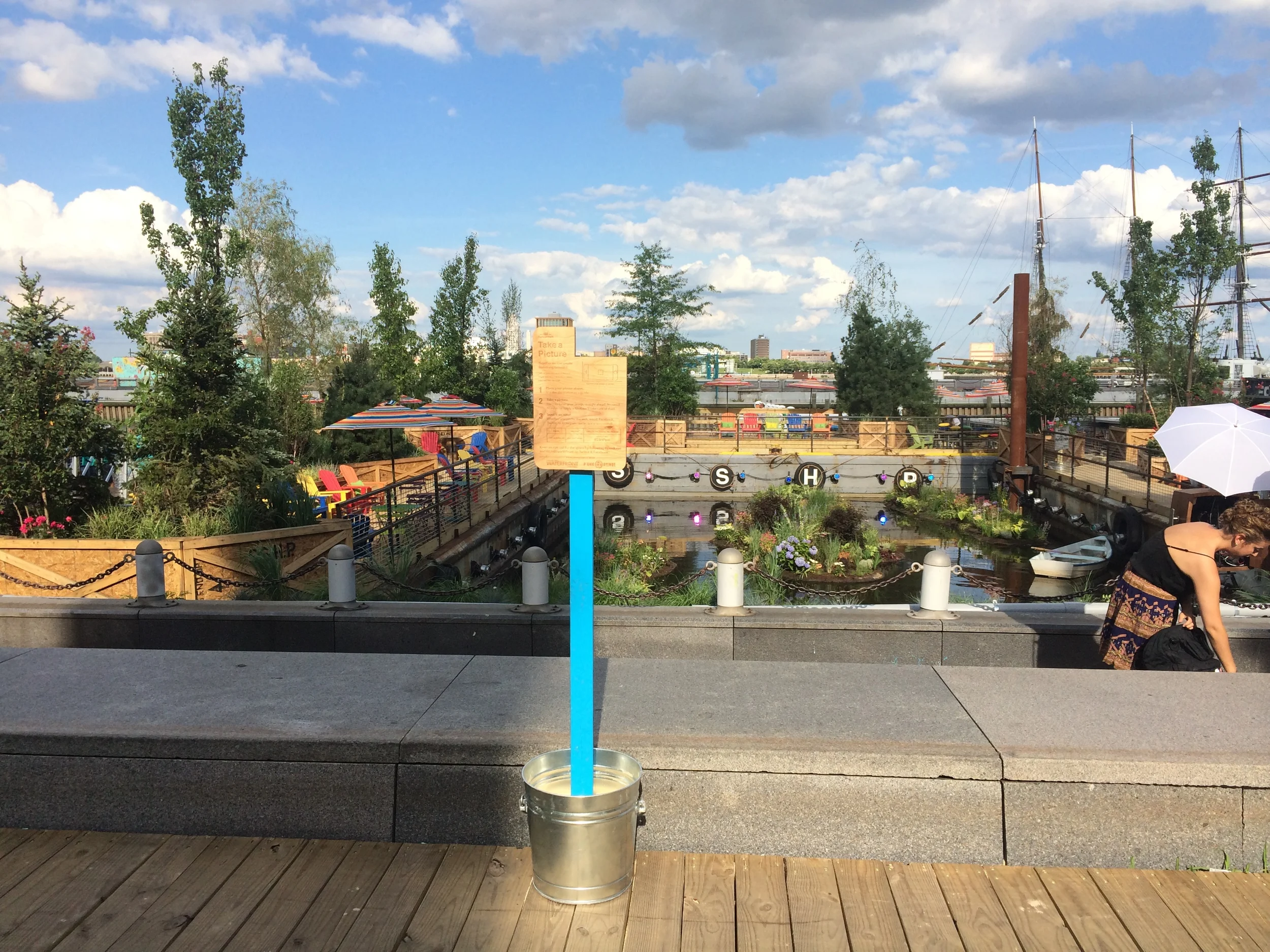Research & Strategy
Delaware River Waterfront Corporation
Overview
Building on the work we did redesigning their website, the DRWC team reached out to our team at P’unk Ave to find additional ways to engage waterfront visitors through a mobile app. Knowing developing a mobile app is a huge investment and without user research indicating this was the right approach, we instead proposed an exploratory design-thinking project to explore the user need, prototype ideas and develop strategies to best achieve their goal of engaging waterfront visitors further.
Our work led to insights on how and why visitors are using their mobile devices before, during, and after their visit to the waterfront, and opportunities for supporting or enhancing their visits—both online and offline.
Process
On-site user interviews and site observations to better understand how individuals were using their mobile devices before, during, and after their visit to the waterfront.
Designed and installed physical signage that helped us explore the following:
Will people engage with a physical installation?
If so, will they share their images as prompted to?
If so, which through which channel do they prefer to share in?
Interviews with key staff and managers of the main parks along the waterfront.
Opportunities
Our research highlighted that a mobile app would not be the right investment for the organization, as there were no immediate user needs it would address or improve. The research did uncover other insights and opportunities for the organization to address:
Interactive, Physical Interventions
People were lining up just to take part in taking pictures from the signage we installed—they’re hungry for being a part of something and interacting with the space, give them these opportunities!
Social Media
A surprising number of people we spoke to were first-time visitors and found about the parks through their friends images taken there. Additionally, we found many people “researched” the parks before their visit simply by scoping out images from people who have checked-into the parks. We felt this was an opportunity to create accounts for each of the parks and meeting people where they already are to provide announcements, event information, facts about the parks or opportunities to engage with visitors through asking or answering questions.
Brand
“DRWC” and “Delaware River Waterfront Corporation” was almost never recognized by the nearly one hundred visitors we interviewed at the parks, and often to confused with the Delaware River Port Authority. When we spoke to the staff at several parks, they mentioned the number one question (besides “Where’s the bathroom?”) is “who is responsible for this?” We suggested their team undertake a brand refresh to create a brand that connects and resonates with the people visiting the waterfront, and maximize its presence and visibility within the parks.
Wayfinding
One of the biggest challenges the organization faces is that their parks are distributed throughout a long stretch of the river where each park is not visible from another, so many people do not realize that there is more than the one park they are in. Additionally, a major highway separates the city from the waterfront. Creating signage or other creative way-finding would help draw more people to the parks and encourage them to visit more than one.
Web Presence
The individuals we spoke to mostly heard about the waterfront park they were in through word of mouth, social media, a blog or event website, or literally just walking by. Few individuals recalled visiting the DRWC website. For information, most people recalled checking Google Maps for directions or Google to search for hours or other information. With this in mind, we reminded DRWC that it is important to not only to be updating their own website but to be actively reviewing and editing information elsewhere on the web.






